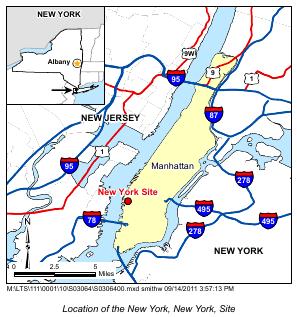The EEOICPA was passed in 2000. It provides compensation to workers who became ill as a result of their employment manufacturing nuclear weapons in the USA, as well as their spouses, children, and grandchildren. Baker and Williams Warehouses EEOICPA coverage is available for qualified former Workers and their families.
Are you eligible for compensation? If you or a family member worked at this or another AWE/DOE facility and became ill, you may be entitled to compensation of up to $400K plus medical benefits. Call EEOICPA Counsel Hugh Stephens at 1-855-548-4494 or fill out our free claim evaluation, We can help even if you’ve already filed, even if your claim was denied!
Here, we have compiled publicly available information and documentation about the facilities covered by the Act to clarify how their activities relate to the Energy Employees Occupational Illness Compensation Program Act.
Baker and Williams Warehouses
Also Known As: Pier 38, Ralph Ferrara Co Warehouse, Ralph Ferrara Inc.
State: New York
Location: New York
Time Period: AWE 1942-1949; Residual Radiation 1950-1990; DOE 1991- 1993 (remediation)
Facility Type: Atomic Weapons Employer, Department of Energy
Facility Description: The Manhattan Engineer District and the Atomic Energy Commission used the Baker & Williams site warehouses for short- term storage of uranium concentrates. This material was generated in Port Hope, Canada by milling African ores.
Environmental cleanup under the Formerly Utilized Site Remediation Action Program was conducted in 1991-1993 by Bechtel National Inc. This site’s remedial action was certified complete in November 1995.
During the period of residual contamination, as designated by the National Institute for Occupational Safety and Health and as noted in the dates above, employees of subsequent owners and operators of this facility are also covered under the Energy Employees Occupational Illness Compensation Program Act.
Listing:
Baker and Williams Warehouses is listed as an Atomic Weapons Employer (AWE) site and as a Department of Energy (DOE) site under the EEOICPA.
Compensation:
As of 03/15/2015, the total compensation paid under Parts B and E of the EEOICPA, including medical compensation, for workers suffering from the effects of having worked at Baker and Williams Warehouses is $327,767.
Baker and Williams Warehouses Workers:
If you or your parent worked at this or any other AWE facility and became ill, you may be entitled to compensation of up to $150K plus medical benefits from the US Department of Labor. Call EEOICPA Counsel Hugh Stephens at 1-855-EEOICPA (336-4272) or fill out the form to the right, whether your claim has been accepted or denied.
We can help with all OWCP (Federal Workers Compensation) claims, impairments, wage loss and health care. 2495 Main Street, Suite 442 Buffalo, NY.
*Site Description and History:
The New York, New York, Site (formerly known as the Baker and Williams Warehouses Site) is located on the west side of central New York City and consists of three adjacent warehouse buildings at 513–519, 521–527, and 529–535 West 20th Street. Building 513–519 consists of 7 floors and a basement; Building 521–527 has 9 floors and a basement; and Building 529–535 has 11 floors and a basement. Each building has a footprint of approximately 9,200 square feet.
During the 1940s, the Manhattan Engineer District used these warehouses for short-term storage of uranium concentrates produced in Port Hope, Canada, from African ores. Approximately 219,000 pounds of orange and yellow sodium uranate were delivered to the site in 1942, and in the following year, approximately 86,000 pounds of the same substance along with 22,000 pounds of sodium uranyl carbonate and 20,000 pounds of black uranium oxide were delivered. The uranium was later distributed to other U.S. government facilities.
In 1989, the U.S. Department of Energy (DOE) conducted a radiological screening survey of the New York site. The survey identified sufficient contamination to recommend the site for inclusion in the DOE Formerly Utilized Sites Remedial Action Program (FUSRAP). In 1991, during radiological surveys of the buildings, DOE identified contamination in Building 513-519 (surface contamination exceeding guideline levels at 4 locations in the basement east bay, 21 locations on the first floor east bay, 1 location on the third floor west bay, and 2 locations on the elevator pit east bay) and Building 521–527 (surface contamination exceeding guideline levels in the basement east bay, basement west bay, and on the first floor). No residual contamination above guideline levels was identified in Building 529–535.
Remedial action of Building 521–527 was conducted in 1991. Decontamination involved using a nonhazardous, nontoxic, biodegradable chemical agent with a self-propelled floor scarifier (a machine that breaks up the surface of concrete and pavement) and chipping hammers. A total of 12 drums of radioactively contaminated waste were generated and shipped to Hanford, Washington, for disposal. Remedial action of contaminated areas of Building 513–519 was conducted in 1993. A steel-shot blasting machine was used to clean surfaces. A total of 38 drums of contaminated materials were generated and shipped to a licensed facility in Clive, Utah, for disposal. A total of 13 cubic yards of low-level radioactive waste were disposed of at out-of-state facilities.


















